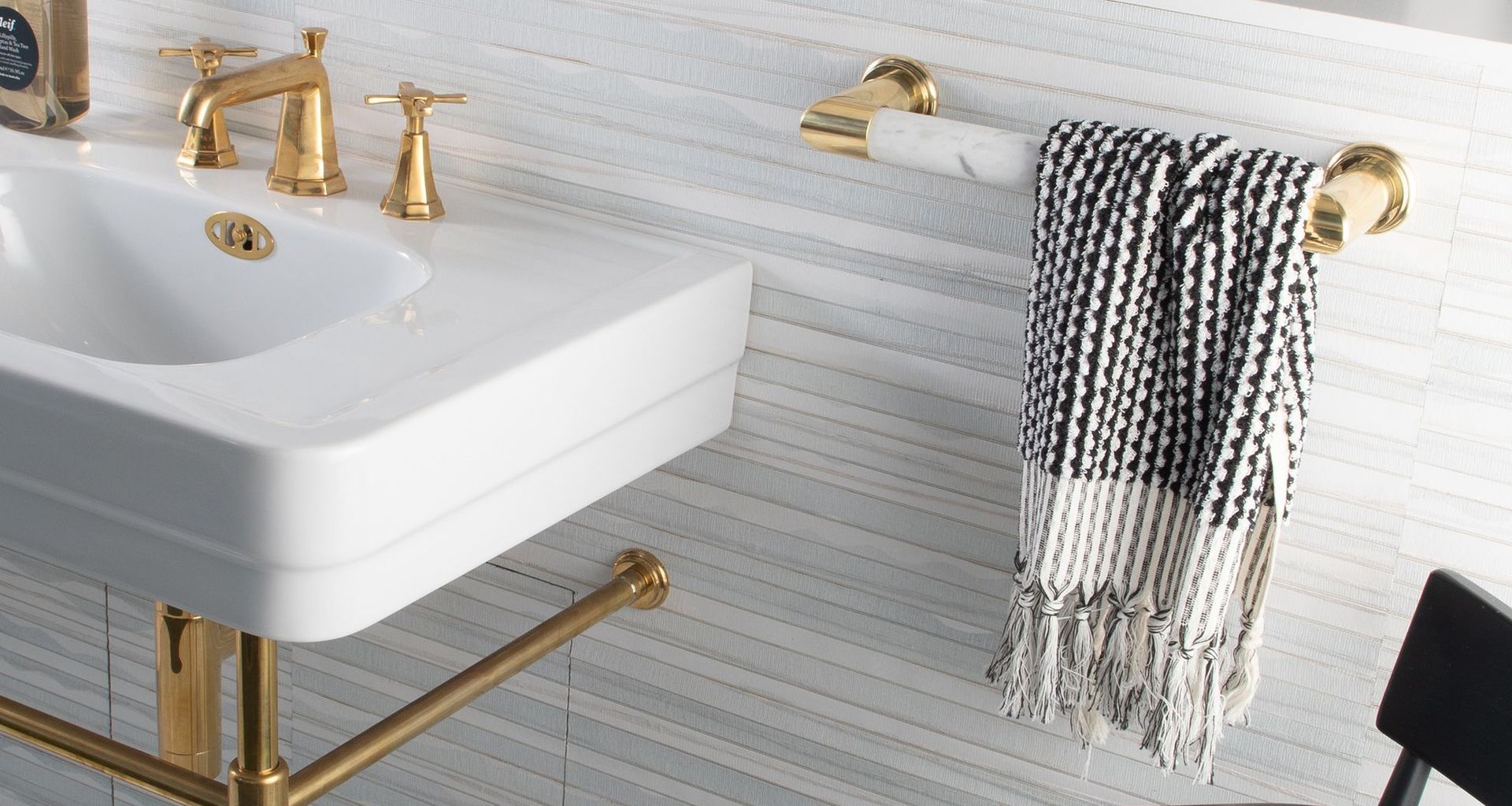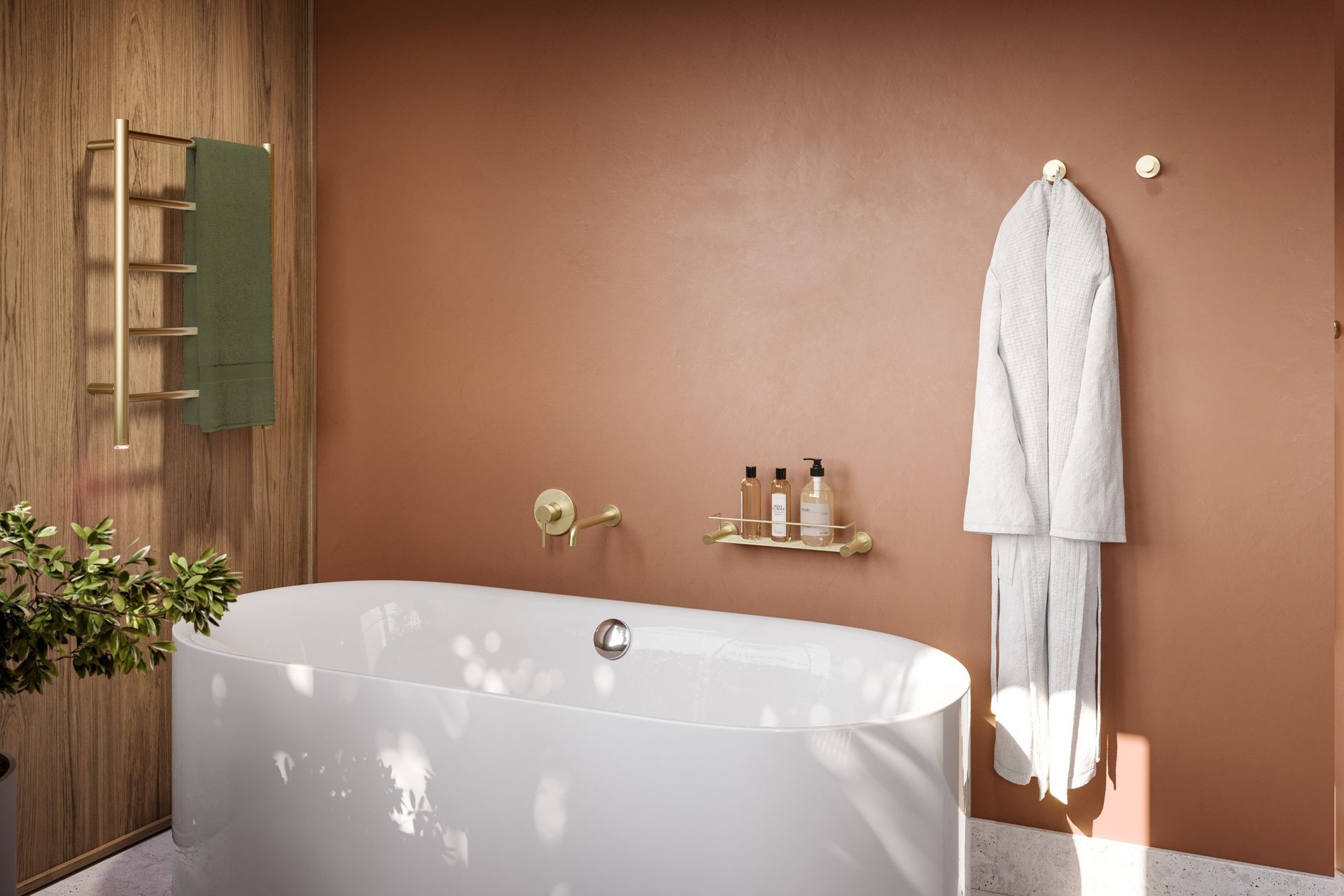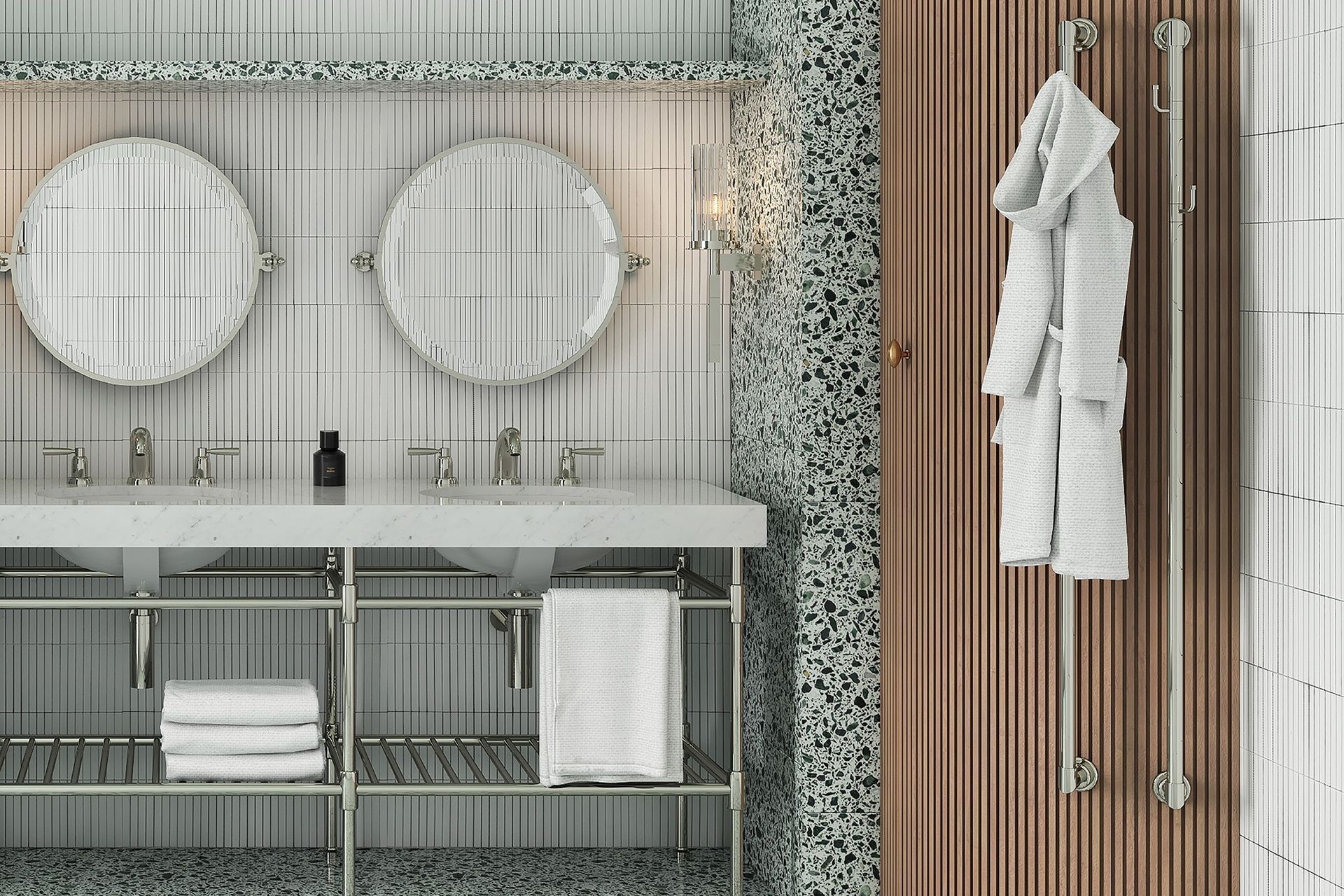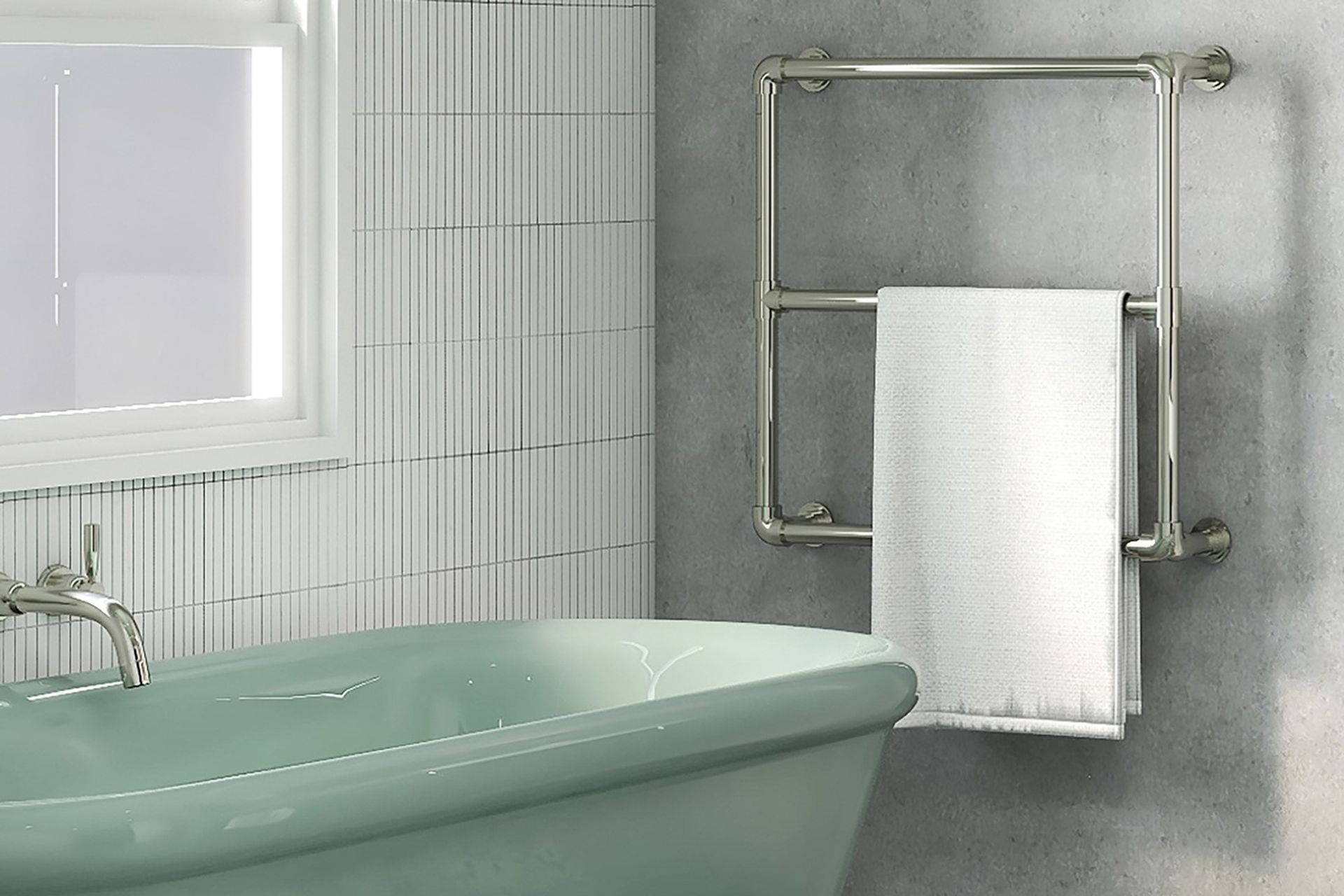The cost of a heated towel rail: A buyer's guide for 2024
Written by
14 April 2024
•
9 min read

Heated towel rails come in all shapes and sizes, with more choices for consumers than ever before. This has made the task of buying one, all the more challenging, and it's a decision you'll want to get right especially with regard to pricing and costs. This buyer's guide is designed to help you navigate through all the particulars so you can make an informed choice with a solution that will deliver everything you need and more.
The average cost of a heated towel rail
The average price of a heated towel rail is around $600 in Australia, for which you'll get a 6 or 7 bar, stainless steel model. There is quite a wide range on either side of this, as you can find very basic electric heated towel rails for as low as $150 and luxurious heated towel rails for over $1,500.
With such a wide range of options and price points, it helps to know exactly why some models cost more than others in order to make any kind of decision on what's best for you.
What makes a good heated towel rail?
Before getting into the breakdown of factors that influence pricing, it's first important to establish what makes a good heated towel rail as the two are closely linked.
A good heated towel is characterised by several key features. It should be made from high-quality materials like stainless steel or brass, which are not only durable but also resistant to corrosion from the moist bathroom environment. Energy efficiency is crucial, so models with low power consumption and features like thermostats and timers are ideal to help you manage energy use and reduce power bills. Safety features are a must, especially in a family household with functions like automatic shut-off capabilities and waterproof rating ones to look out for. Additionally, a good solution should also obviously do its job well, which is to warm and dry towels effectively with a design that is easy on the eye.
Factors that influence the price of a heated towel rail
Now you have some pricing to go by and understand the qualities that make an excellent heated towel rail, it's time to find out what your money will get you with the factors that influence the price you'll pay.
Type of heated towel rail
A heated towel rail is often defined by its mode of power and/or its design. With respect to the former, you'll have a choice between electric heated towel rails and hydronic heated towel rails. Electric heated towel rails are the most common type and are usually plugged into a wall socket or hardwired into the bathroom's electrical system and start from around $150. Hydronic heated towel rails are integrated with the home's hot water system so have an added layer of complexity with pricing starting from around $300.
The most popular design style is the wall-mounted heated towel rail, which is fixed to the wall and can be either electric or hydronic with a price range starting from $150. There are several styles within this like single bars (horizontal or vertical) and ladder heated towel rails (which resemble the look of a ladder), giving you a variety of designs to look at.
The freestanding heated towel rail is the other design to consider, powered by electricity with no installation required. You can find models at both ends of the price scale, from very cheap entry-level models at $150 to sleek and modern designer models at over $1,000.
Type of material used
The material used impacts its price due to differences in manufacturing, durability, aesthetics and more. The most common materials include stainless steel, chrome, and brass.
Chrome is typically the most affordable, often used for its high gloss finish and can be priced from $150 - $500. Stainless steel is next, highly durable and resistant to corrosion with mid-range pricing from $200 - $700. Brass, with its golden yellow colour and robust qualities, is more of a premium choice that often starts at around $500 and above. Beyond this, you may also see luxurious models that feature specially treated metals at which point you're usually well over a $1,000 starting price.
Size and wattage
The size of a heated towel rail, often indicated by the number of bars and wattage can greatly influence its price. Generally, towel rails with more bars offer greater capacity for hanging multiple towels and larger towels, increasing in price the larger they get. A basic model with 1 to 4 bars will typically be a the lower end of the scale, starting from $150 while models with 5 to 10 bars will set you back at least $300. As for the power capacity, lower wattage models around 50-75 watts found in smaller products, are as you'd expect, cheaper than larger units between 100 watts to 250 watts.
Brand
Brand, like most products for anything you'll buy, has an obvious impact on pricing with the more established global brands typically occupying the mid-high end price range with the lesser known brands having more options at entry-level pricing. The only exceptions to this are exclusive brands that deal only in luxurious, designer models made from superior materials and packed full of features.
Features
The features of a heated towel rail are a great way to distinguish one choice from another in both functionality and price. A basic model that heats and does nothing more won't obviously cost you anything extra but as you start to add things like thermostats, timers, and digital controls, the price does start to increase. For instance, for an option with a built-in thermostat for regulating temperature you can expect to pay at least $300. If you add a timer for scheduled heating, the price heads more towards the $700 mark. Features such as Wi-Fi connectivity for remote operation or dual fuel capabilities, allowing the rail to operate on both electric and hydronic systems, put you into the high-end price range starting at $1,000.
Installation costs
Having covered the unit price you'll pay for a heated towel rail, you also have to account for the cost of installation which can vary based on the type (electric vs hydronic) and the complexity of installation i.e. if additional wiring or plumbing is required. A straightforward installation of an electric heated towel rail will probably cost you around $200 - $300 from a qualified electrician. Hydronic models, however, are more complex and require a hydronic water system installed in the home. If such a system exists, then you can expect quotes from around $400 and above. If not, then you'll need to get a whole system installed which will cost you thousands, with your project becoming one to heat the entire household, not just your towels.
The only exception to all of this is if you buy a freestanding heated towel rail which only needs to be plugged into the wall socket before being good to go. This makes the freestanding models quite appealing to some, allowing them more budget to spend on the unit itself.
Running costs
The running costs of a heated towel rail are highly dependent on the power source (electric or hydronic), its power capacity (wattage), and how frequently it is used. Electric heated towel rails are fairly easy to calculate using the following formula, so long as you have this information and your local rate for electricity.
Running cost (per day) = Wattage (in kW) × Hours of use × Cost per kWh ($)
So, if you buy a 100 watt towel rail and use it for 4 hours per day, paying a rate of 25 cents per kWh, the calculation would be.
0.1 kW x 4 hours x $0.25 kWh = $0.10 per day
The cost of a hydronic model is slightly more complicated to calculate due to the variables of the efficiency of the hydronic heating system and the type of energy used to heat the water (electricity, gas solar etc) and the associated cost of that. However, with a good system setup, they are seen as an option that can lower your utility bills even further.
Everything you need to know to get you started
Having covered all the essentials, you now have a solid base of knowledge to understand and decide the exact cost of buying, installing and running a heated towel rail. They are a great addition to any bathroom, and with a budget to guide you, you'll be able to plan, purchase and maintain one to keep your towels warm throughout the year.
Related article: Are heated towel rails worth it? Our verdict, FAQs and more


